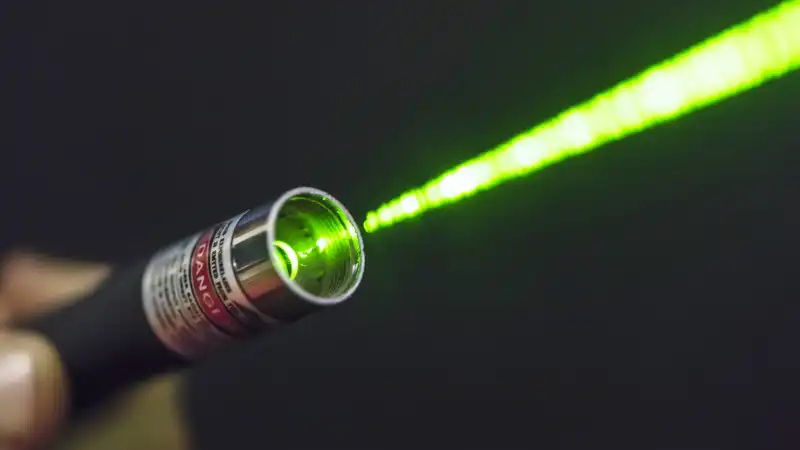Laser Hacking If there is one word that indicates that we are already living in the future I imagined as a child, it is laser hacking, or to put one method more technically, "laser fault injection. Laser hacking techniques are not new, but usually require sophisticated and expensive machinery to perform such advanced tricks. [However, two hackers from security firm NetSPI plan to unveil their open-source, 3D-printable solution, RayV Lite, at the Black Hat cybersecurity conference in Las Vegas this weekend (via Wired). Costing only $500 and using many off-the-shelf components, the two hope the device will bring laser hacking to the masses.
Introduction: modern chips use incredibly small transistors. In fact, they are so small that they are vulnerable to slight changes in charge. Laser hacking devices using the laser-fault injection method, with precisely aimed and timed lasers (this sentence is what I always wanted to write), shift electrons out of position and cause the chip to malfunction.
By pinpointing the exact time and place to aim the laser, the hacker can potentially subvert hardware security measures and gain access to all sorts of chip functions that would otherwise be locked and (hardware) keyed.
Normally, considerable hardware and large amounts of money would be required to achieve such an effect. However, Sam Beaumont and Larry "Patch" Trowell have designed a tool that achieves the same effect using a relatively inexpensive and widely available set of components, including a $20 laser pointer, a Raspberry Pi, and an open source 3D printed microscope design.
The creators hope to encourage hardware manufacturers to protect their chips against laser hacking techniques. By creating a device that can be manufactured for as little as $500, they hope to show that such attacks are possible for DIY and hobbyists.
"We are not discovering anything new in the sense that others have used lasers this way before," says Beaumont.
"We are doing it at a lower cost so that people can do this at home."
In tests, one car chip that was laser-glitched bypassed security checks that allow hackers to scan the code to identify vulnerabilities. According to the researchers, PIN-protected cryptocurrency wallets are also vulnerable:
"If you remove the chip from a cryptocurrency wallet and hit it with a laser at the right time, it will assume you have a PIN. They then jump over the instructions and return the key.
The first version of the tool will focus on laser fault injection, but later versions will use a different method that uses laser logical state imaging. This more advanced technique uses lasers to monitor chip architecture and activity and map data being processed to reveal vulnerabilities that can later be exploited.
While laser-based hacking techniques seem straight out of the pages of a science fiction novel, it seems likely that this tool will allow a new generation of hobbyists to begin tinkering with the precious electrons that flow around our electronic devices.
. While security is the primary concern here, access to relatively inexpensive tools that can target, disrupt, and reveal the inner workings of very complex silicon is expected to further many people's understanding. Alternatively, your hardware crypto wallet will not merely be more prone to sliding off the back of the couch, but will also be more vulnerable to laser rampages or, given the volatility of the crypto market, the occasional expensive paperweight.


Comments